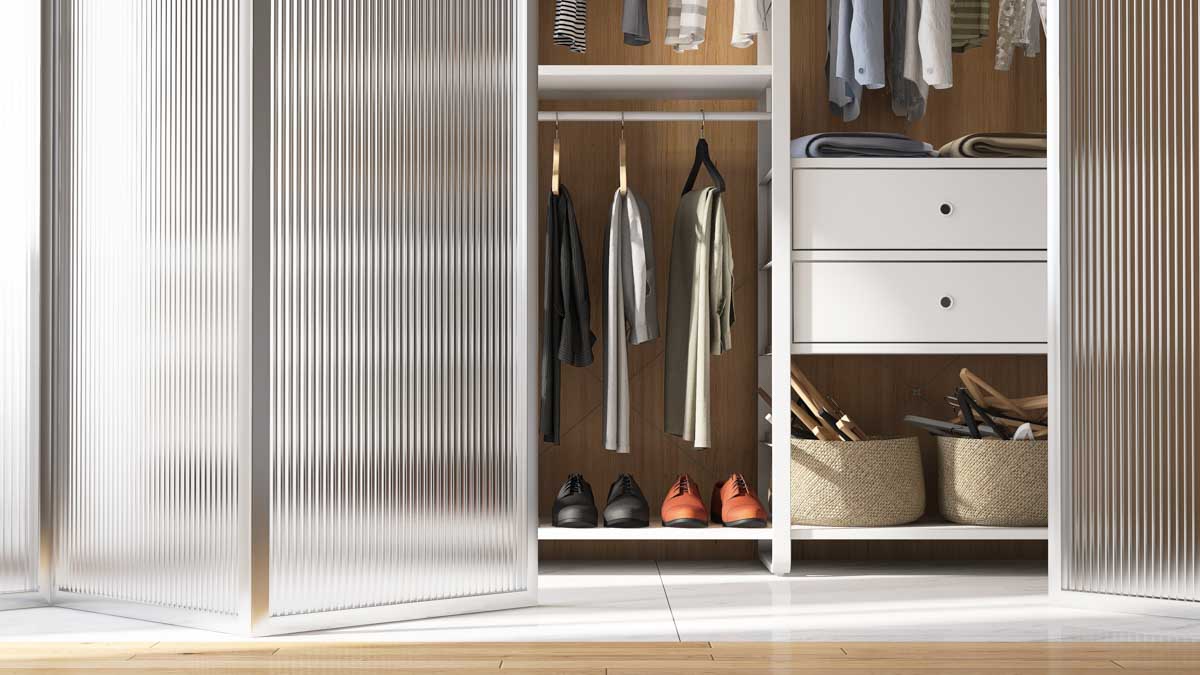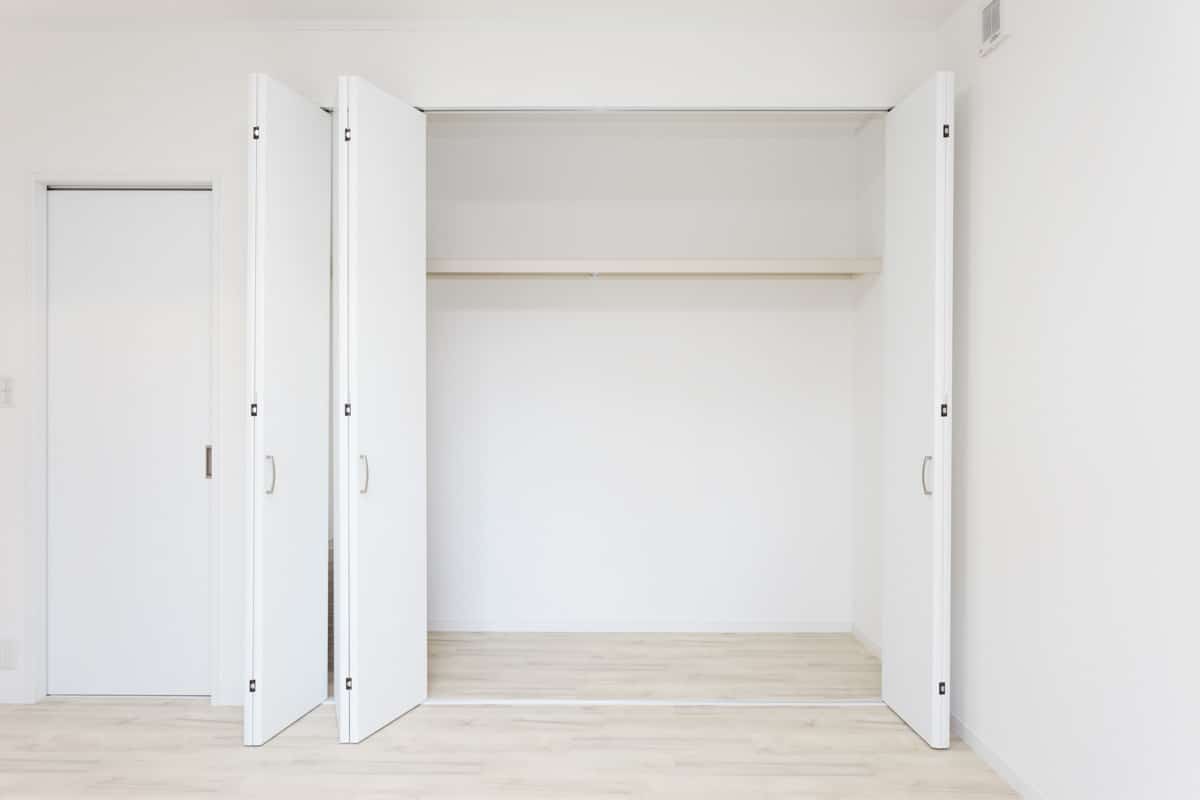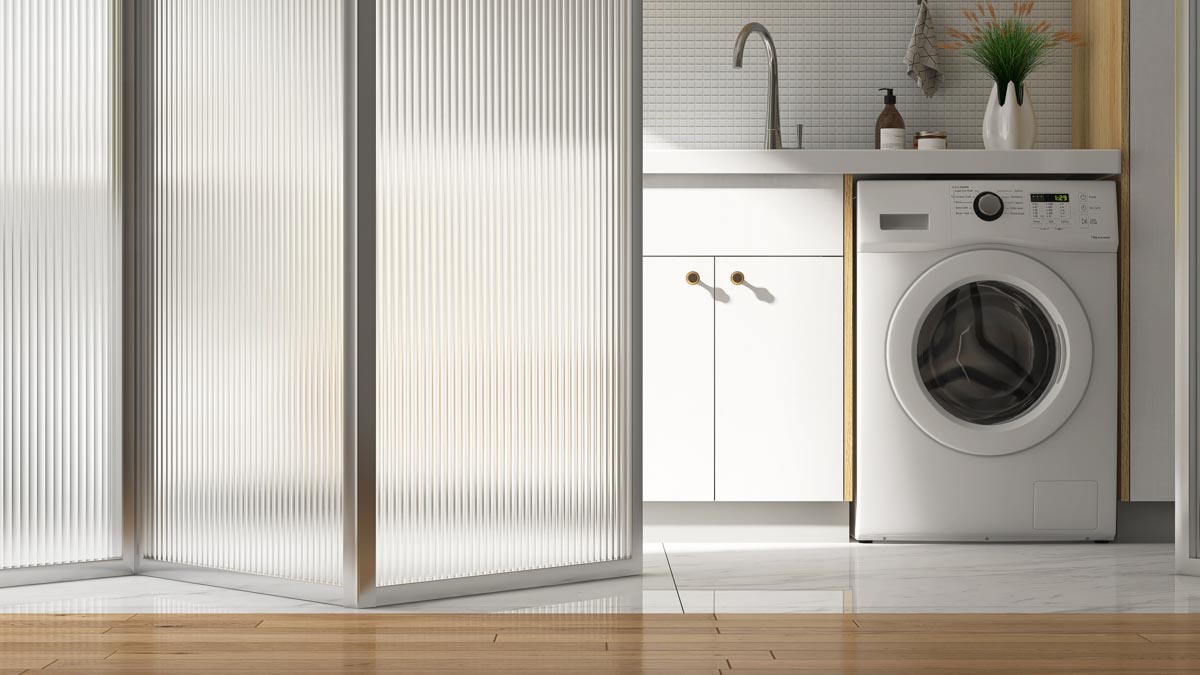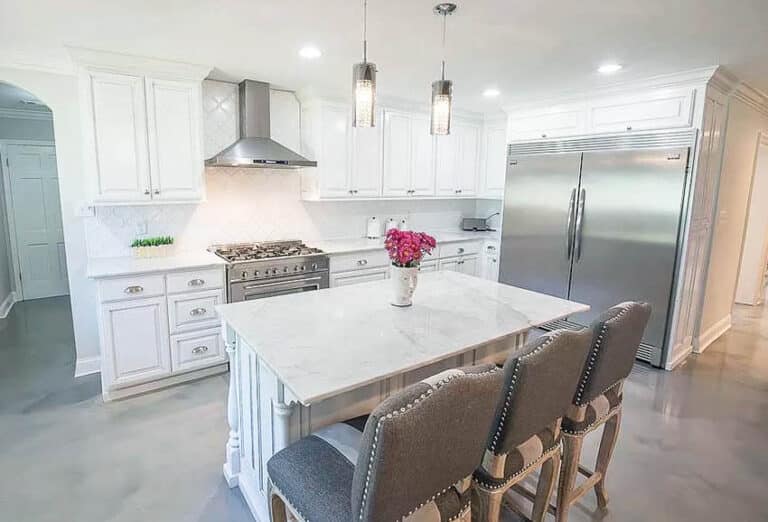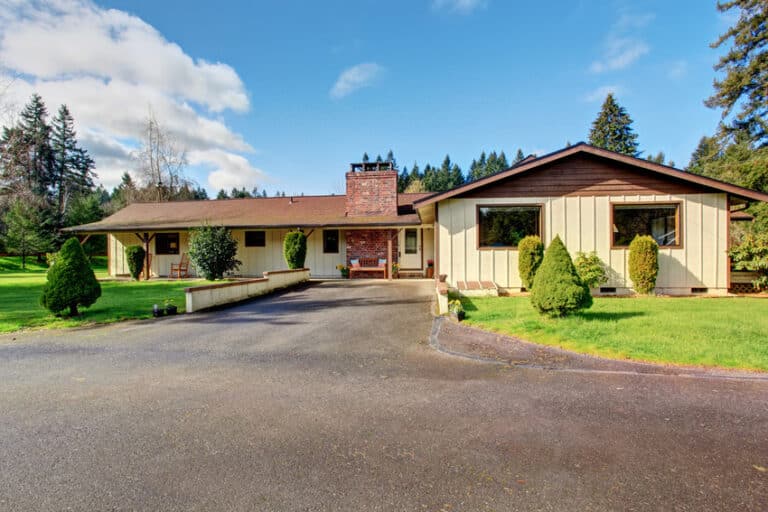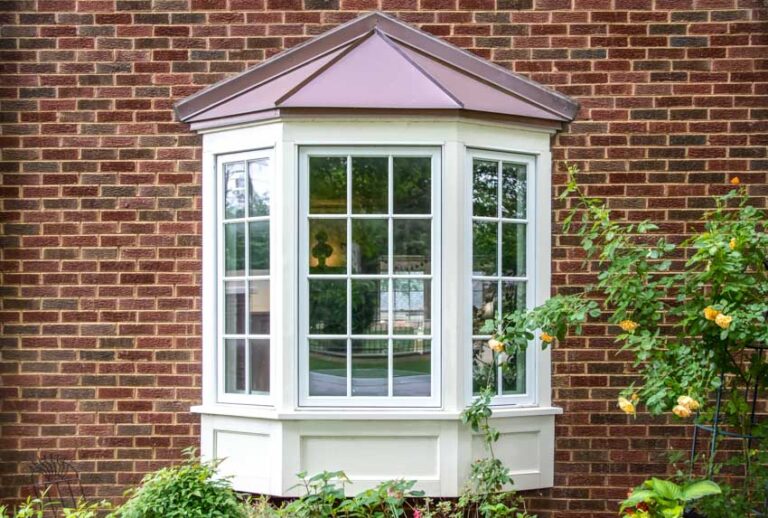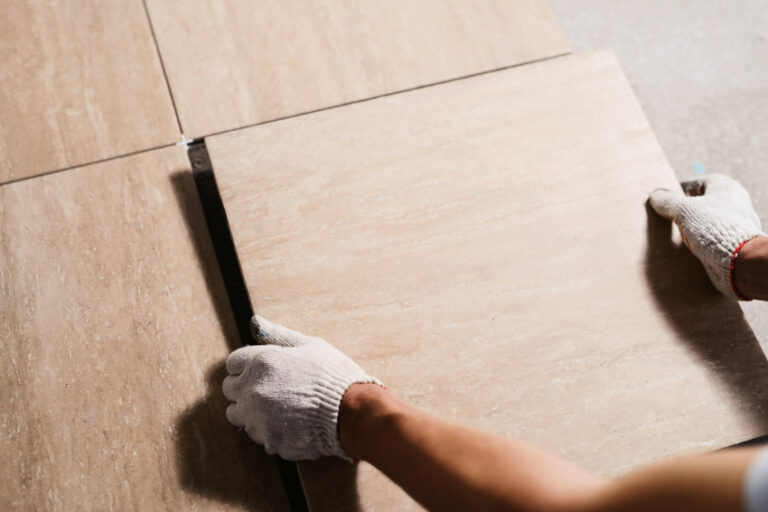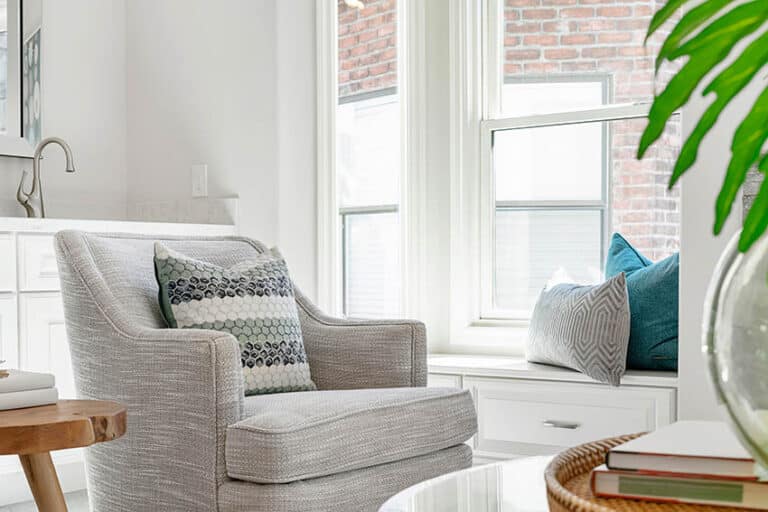7 Popular Bifold Door Problems and How to Fix Them

Bifold doors are practical in homes with limited space, and this design configuration folds the divided panel on its nearest side instead of a full swing door. This exposes homeowners to various bifold mechanism problems, and needing to know how to fix them.
Top Problems With Bifold Doors
Here are the top problems associated with bifold panels. Read on below for more details and the solution for each issue.
- Moisture causing warping and sagging.
- Not shutting flush caused by the hinges wearing out.
- Locks not engaging caused by misalignment.
- Dirt and grime causing them not to close properly.
- Rattling panels are often caused by components loosening over time that need to be reattached.
- Dropping doors are usually caused by only having two hinges when three are needed, or those that are out of alignment.
- If your doors won’t open the cause is often a malfunction in the lock assembly that needs to be replaced or lubricated.
Your Doors Might Have Expanded Or Warped
Often, wooden bifold doors will expand and contract, which can cause misalignment and sagging. This warping is usually caused by extreme weather conditions or extended dry weather conditions, exposure to water or moisture, and/or changes in humidity.
These conditions will cause the material to expand, which will cause it to warp. Both expansion and contraction can cause misalignment of components.
• Use a fine grit to gently sand off edges that have extended through. You can use a planer with a level to ensure the straightness of your doors.
• Adjust the screws or the tension located on your top and bottom brackets. For damaged hardware, especially when rust is present, consider replacing it with a sturdier material.
• For interior panels made of wood, consider using a dehumidifier. The device will reduce the moisture content as well as prevent further damage to the door’s hardware.
There might be dirt or debris along the tracks: A simple pebble caught along the frame’s tracks can cause the doors not to shut properly. This happens, especially on bifold designs that open to the exterior.
• Cleaning the tracks with a vacuum cleaner will ensure any trapped dirt is removed.
• Regularly clean your door’s tracks and check if any dirt or debris is caught along the tracks. This also prevents hardened dirt from accumulating on the hardware itself.
Bifold door panels are not leveled: Check the level of your doors. Over time they can drop due to substandard hardware or not being able to carry the weight. This can cause misalignment of the panels.
• Check for damaged or loosened hardware. If there is significant damage, consider replacing the hardware with a more durable material. For a slight misalignment, you can adjust the screws to lift the dropped door to level.
Door Not Shutting Flush
Aside from misalignment, warping, dirt on tracks, or not having leveled panels, bi-fold doors won’t shut flush due to issues with their mechanisms or components.
The pivot hinges might be damaged or misaligned: Bifold panels are able to be fully flush against another panel or on their side due to their pivot hinges. If this hardware is damaged or misaligned, it will not shut flush properly.
• Check if your pivot hinges are bent or broken. Improper installation can cause these components to get damaged, as you might force the panels to close or open.
• Always have your instruction manual on hand to check for proper configuration. An expert installer can be called if you are unsure of the damage and you can contact the manufacturer if they are still under warranty.
Clean and lubricate your hardware: If you’ve been using your folding panels for quite some time, you will need to grease them with lubrication and clean any debris or dirt that might have accumulated over time.
• It is recommended to apply lubrication, especially for hinges or hardware with graphite lubricants or minerals, periodically.
• Experts recommend every six months of cleaning and lubrication of door and window hardware to maintain smooth operation. This also prevents undesirable squeaking sounds as you open or close them.
Door Locks Are Not Engaging
Misalignment of the latch and strike plate: The latch is a locking mechanism that is installed on the side of one panel, aligned opposite to the strike plate screwed on the side of the adjacent panel.
These two separate components should be aligned when the bifolds are closed, as the latch extends and flushes through the indentation or niche of the strike plate. If there is a misalignment, the panels won’t close or engage properly because of non-engaging door locks.
• Inspect if the strike plate and latch are misaligned. You can unscrew the latch to adjust its level corresponding to the latch and screw it tightly to secure the hardware.
• Check if there are obstructions that might have gotten in the crevices of the latch mechanism. Applying a lubricant and cleaning around the latch can help remove any debris or dirt.
Damaged or obstructed lock cylinder: Some folding mechanisms, especially for exterior use, will have a lock cylinder mechanism.
• Remove your lock cylinder and inspect for damages. If there are no visible damages, an obstruction might be the cause of the locks not engaging.
• Use a spray lubricant or graphite powder to clean the keyhole.
Doors Sticking or Not Sliding Properly
Debris or dirt along the tracks: Like a bypass door, bifold designs usually have tracks installed up or down; other variations have both tracks installed on the upper and lower frames, especially if you have heavy materials or have several panels on one wall.
• Since most tracks are black due to the rubber or metal material, debris or dirt might not be easily visible. Use a vacuum cleaner or hand-held vacuum to clean off any dirt that might have stuck along the tracks. A stiff brush can also remove stubborn dirt, hair, or debris along the tracks.
Damaged tracks or weatherstripping: Over time, the constant use of your bifold panels can wear out the tracks or cause weatherstripping.
• Inspect for any damage to the tracks or weatherstripping. This can be worn-out material, or the track or weatherstripping might have bent, causing the track mechanism to get misaligned. Replace the tracks or weatherstripping as soon as possible to prevent further damage.
Doors Make a Noise When Opening
Rattling door panels: Loosened components can cause the panels to rattle when opening or closing.
• Tighten any loose components. Also, check for misalignment. Improper installation can cause the whole system to have loose components.
Obstruction along the tracks: Dirt or debris along the tracks can cause unwanted noise during operation. This is common in bifold garage doors due to the ease of dirty elements finding their way onto the tracks.
• Maintain clean tracks that are free from any small stones or dirt by vacuuming or brushing them off with a stiff brush.
Rusty hardware can cause squeaking: Rust or dirt can cause the hinges or locks to produce a squeaking noise.
• Periodic greasing or lubricating of components can maintain the hardware’s quality. Remove each component and clean it separately at least every 6 months.
Gritting of the door frame against the track or adjacent panel: Expansion of panels can cause the sides or lower frames to grit through the tracks or against adjacent panels.
• For wooden doors, you can sand off the extra material due to expansion.
Doors Dropped
Heavy doors and a lack of sturdy hinges: Understanding the material of your bifolds will help you determine the best components to assign to your folding panel system and how to fix issues. The weight of your doors is a typical cause of them dropping from their proper level.
• Hollow panels will usually need two hinges, while a solid-core panels will most likely require three hinges to hold the added weight. Bifold designs use hinges that can fully open from side to side.
• Adjust the alignment of your door by unscrewing the hinges and adjusting it to the proper level. You may need to sand off any excess length if expansion has occurred. Also, add hinges or replace the hinges that are sturdier for heavy panels.
• You can use shims to adjust the panels in place. These are tapered components, usually made out of wood, with a thin end inserted into the frame that can hold it in place.
Doors Won’t Open
Stuck or jammed door lock system: If your bifold panels suddenly won’t open, it is likely that your lock system is stuck or jammed. This is due to a number of reasons, with the most common being a damaged lock system or expansion or contraction of the door’s materials.
• Understand the locking system you have in order to determine the right approach and the proper tools to use.
• The best way to examine your locking system is to remove the latch plate from the frame in order to release the lock system. You may need to ask a professional locksmith if there is no way to unscrew the latch plate.
• You have the option of drilling through the screws of the latch plate, but this can damage your frame and hardware along the way where the lock system is installed.
• Clean and lubricate your lock system.
Factors That Cause Problems
Low-quality Door Materials: Here are the most popular interior materials: solid wood, solid-core, hollow-core, metal and glass, and medium-density fiberboard. Materials used are a major factor in their longevity.
• It is known that solid-core doors are more durable than hollow-core products. However, you’ll need durable hardware that can hold the weight of your folding panel system. Naturally, a more expensive bifold system.
• Check your material specifications for quality and only purchase from reputable suppliers.
• MDF, or Medium Density Fiber, is one of the cheapest materials for these systems. However, being expensive does not necessarily mean it is the best option. Considerations on weight, insulation, and appearance should also be factored in.
Improper Size: Typically, when ordering a ready-built folding door system, you’ll need to submit measurements to your supplier. Always double-check the bifold door sizes you submit.
Bifold doors provide easy access to a room or area without requiring much clearance for opening. – Black & Decker The Complete Guide to Carpentry for Homeowners, Chris Marshall
Measure twice, and if possible, have another person measure the opening before forwarding the measurements to the installation company.
• If you know you’ve submitted the right measurements but still have problems with the fitting, you should check the frame for any irregularities or obstacles. Also, check if the correct hardware is used.
• Before making any further adjustments or replacing the door, you want to check for the frame level and straightness. If it is possible to adjust the opening rather than asking for a whole replacement for your panel system, then this should be first addressed.
Incorrect Installation: An inexperienced installer can cause a whole lot of issues. Having a certified installer, especially for folding panels with additional features such as smart systems do the installation.
Moisture: It is important to note that, aside from wood, metal, glass, and some plastic materials are also affected by extreme weather conditions.
• Solid-core wood usually has a longer service life compared to most other materials. However, constant exposure to water or moisture can significantly lessen the structural integrity of your wooden panels.
Though you may find bifold products made out of treated wood, in addition, there are specific wood species that are immune to rot and other damage due to moisture exposure.
• Aside from the panel and framing material, moisture can cause the hardware to corrode. Stainless steel and other types of corrosion-resistant metals are recommended for panels exposed to constant moisture.
• Considering where you will be installing your bifold doors in the appropriate types of rooms in a house should help you determine the best material.
• If your bifold system has insulation, moisture can compromise the quality of your insulation materials, which means reduced energy efficiency.
Damage: Purchasing from an unreliable supplier, damage during transportation, or incorrect installation can cause damage to your bifolds.
• Make sure to have a warranty agreement between you and your supplier to ensure you can have a replacement or free repair if there are damages to the product.
• Also, choose a reputable moving or transportation company.
• Take a video when unpacking or when installing your doors.
Bad Maintenance: Like most types of appliances, devices, or building components, regular and proper maintenance is important. Use proper tools when removing any part of your bifold mechanism.
Don’t use harsh chemicals when cleaning the surface or hardware of your doors. When lubricating parts, make sure that you are using a quality and proper solution.
Wrong Locking Mechanism: The level of security you need helps determine which is the best locking system to use. Usually, when purchasing they come complete with the hardware and locking system. You should check with the manufacturer if there are other options that are compatible with your model.
Aesthetic considerations can also be accounted for when selecting the best lock. The most common locking mechanisms are surface locks, mortise locks, flush bolts, and the newest smart locks that can be controlled using smartphones. See more related content in our article about the different alternatives to bifold closet doors on this page.


